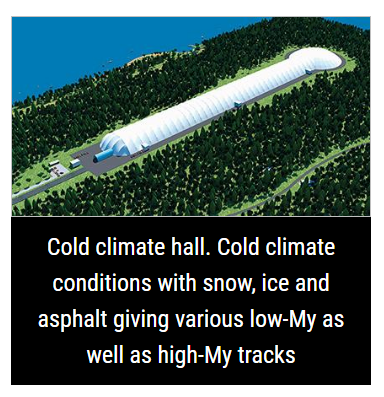Welcome to Sino Bearings web
24x7 HOTLINE:+86-28-81454188

 TECHNOLOGY
TECHNOLOGY
Anders Vidhav introduces a new concept that’s shaping the testing and development of the vehicles of tomorrow
The development of future vehicles calls for solutions where new tests and validations can be designed and where controllable climatic conditions securing repeatability can be offered 24/7, 365 days per year.
The demand for efficient testing possibilities increases continuously due to increased volumes, as well as the automotive industry’s need to shorten lead times in the process of model development.
This is the background to why Star Lake Holding, a key player in the field of climate tests, has developed the Vehidome concept; to provide the industry with indoor facilities that can eliminate some of the problems mentioned above.
Combining experience, lessons learned and hours of discussions with customers from the automotive industry has showed that one of the big challenges is repeatable test conditions and how to construct suitable facilities that are big enough at a reasonable cost.
Controllable climate for testing future vehicles
It is clear to all test providers that the solution is climate halls, and a few have been built, foremost in northern Europe. These halls are built in a traditional way, using steel and metal sheet, which can result in size limitation, GPS-interference and safety issues with supporting poles in the testing areas.
Together with the Norwegian company Scandihall, Star Lake Holding has developed a totally new method for the production of indoor climate halls for vehicle testing. The new method, based on using a tent with a pressure above atmospheric pressure (the well-known and proven air-dome technology) offers several advantages compared to traditional methods, both technical as well as economical. The concept is called VehiDome.
Huge potential savings in vehicle testing
Since the concept was released in Stuttgart in May 2019, the feedback and interest from the automotive industry have been massive. The advantages compared to conventionally built halls are obvious.
One gamechanger is that tests can be performed realistically with speed and handling as if they were done outdoor, since there are no structures in the dome posing a risk for damages or injuries. Firstly, if one loses control over the vehicle and goes off the test track, the patented fender system will absorb the kinetic energy of the vehicle. Secondly, if the vehicle should pass the fender and hits the dome membrane, the only thing that will happen is “a hole in the wall”. There will be no serious damages to driver or the car. Some repair work will be needed to fix the membrane fabric – but that is it.
What also makes the tests “realistic” is, of course, the size. As an example, setting up a VehiDome with the size 100m width and 1,000m in length does not represent a technical problem. Just imagine this size along with the fact that you can control the climatic conditions inside the dome according to your exact needs and demands – and change them whenever you need to!